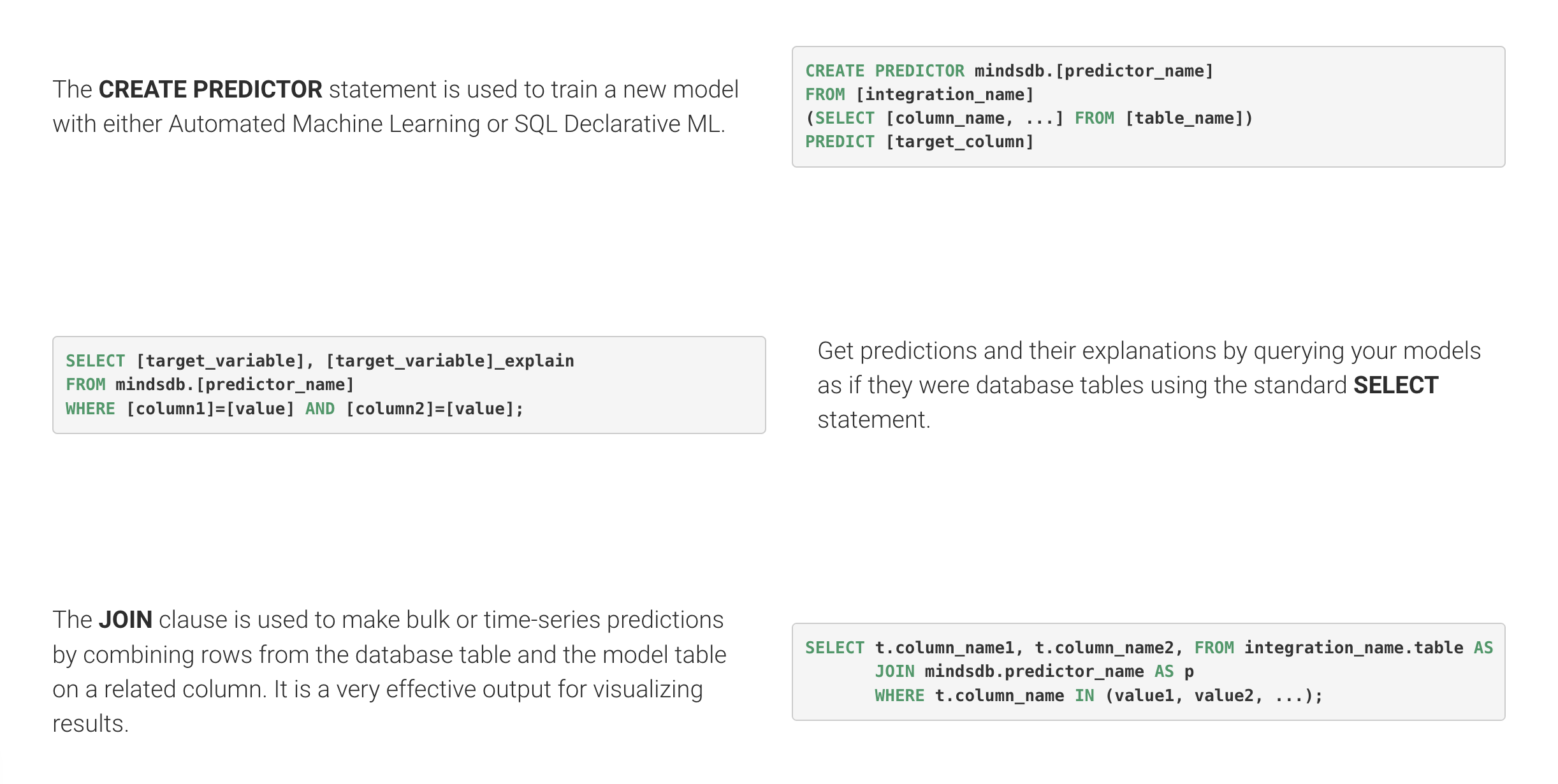MindsDB ML-SQL Server enables machine learning workflows for the most powerful databases and datawarehouses using SQL.
- Developers can quickly add AI capabilities to your applications.
- Data Scientists can streamline MLOps by deploying ML models as AI Tables.
- Data Analysts can easily make forecasts on complex data (like multivariate time-series with high cardinality) and visualize them in BI tools like Tableau.
NEW! Check-out the new MindsDB Dev 💡 challenge (and the cash:dollar: prizes) for democratizing machine learning!
If you like our project then we would really appreciate a Star ⭐!
Also, check-out the rewards and community programs.
Installation - Overview - Features - Database Integrations - Quickstart - Documentation - Support - Contributing - Mailing lists - License
You can try Mindsdb ML SQL server here (demo).
To install the latest version of MindsDB please pull the following Docker image:
docker pull mindsdb/mindsdb
Or, use PyPI:
pip install mindsdb
MindsDB automates and abstracts machine learning models through virtual AI Tables:
Apart from abstracting ML models as AI Tables inside databases, MindsDB has a set of unique capabilities as:
-
Easily make predictions over very complex multivariate time-series data with high cardinality
-
An open JSON-AI syntax to tune ML models and optimize ML pipelines in a declarative way
-
Let MindsDB connect to your database.
-
Train a Predictor using a single SQL statement (make MindsDB learn from historical data automatically) or import your own ML model to a Predictor via JSON-AI .
-
Make predictions with SQL statements (Predictor is exposed as virtual AI Tables). There’s no need to deploy models since they are already part of the data layer.
Check our docs and blog for tutorials and use case examples.
- Automatic data pre-processing, feature engineering and encoding
- Classification, regression, time-series tasks
- Bring models to production without “traditional deployment” as AI Tables
- Get mModels’ accuracy scoring and confidence intervals for each prediction
- Join ML models with existing data
- Anomaly detection
- Model explainability analysis
- GPU support for models’ training
- Open JSON-AI syntax to build models and bring your own ML blocks in a declarative way
MindsDB works with most of the SQL and NoSQL databases and data Streams for real-time ML.
| Connect your Data |
|---|
 |
 |
 |
 |
 |
 |
 |
 |
 |
 |
 |
 |
 |
 |
 |
 |
To get your hands on MindsDB, we recommend using the Docker image or simply sign up for a free cloud account. Feel free to browse documentation for other installation methods and tutorials.
You can find the complete documentation of MindsDB at docs.mindsdb.com.
If you found a bug, please submit an issue on Github.
To get community support, you can:
- Post at MindsDB Slack community.
- Ask for help at our Github Discussions.
- Ask a question at Stackoverflow with a MindsDB tag.
If you need commercial support, please contact the MindsDB team.
A great place to start contributing to MindsDB will be our GitHub projects for 🏁
- Community writers dashboard tasks.
- Community code contributors dashboard tasks.
Also, we are always open to suggestions so feel free to open new issues with your ideas and we can give you guidance!
Being part of the core team is accessible to anyone who is motivated and wants to be part of that journey! If you'd like to contribute to the project, refer to the contributing documentation.
Please note that this project is released with a Contributor Code of Conduct. By participating in this project, you agree to abide by its terms.
Made with contributors-img.
Subscribe to MindsDB Monthly Community Newsletter to get general announcements, release notes, information about MindsDB events, and the latest blog posts. You may also join our beta-users group, and get access to new beta features.
MindsDB is licensed under GNU General Public License v3.0








